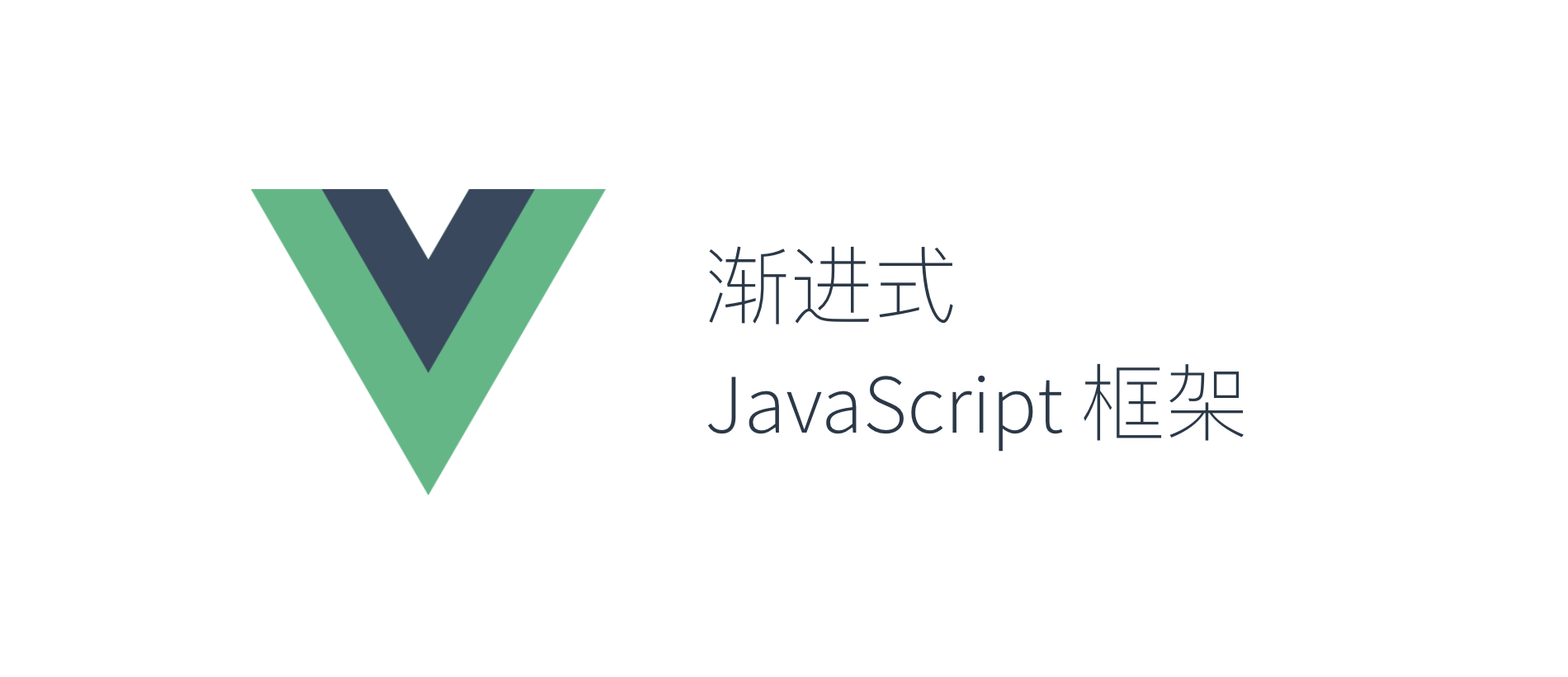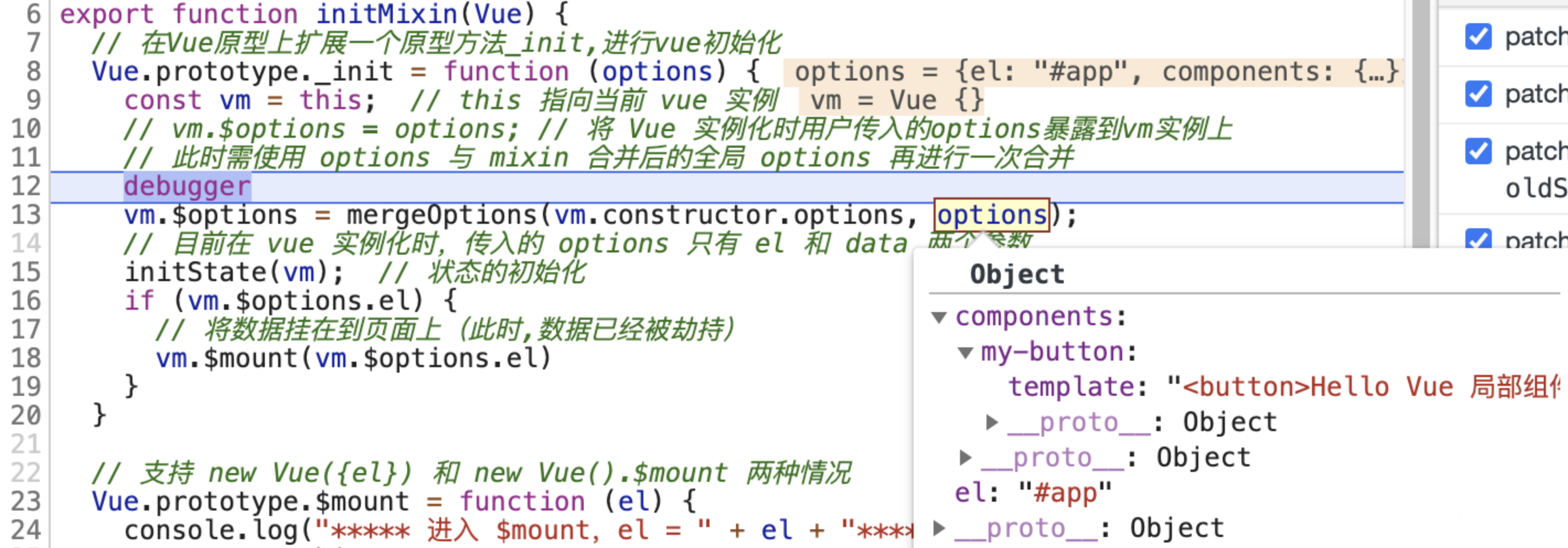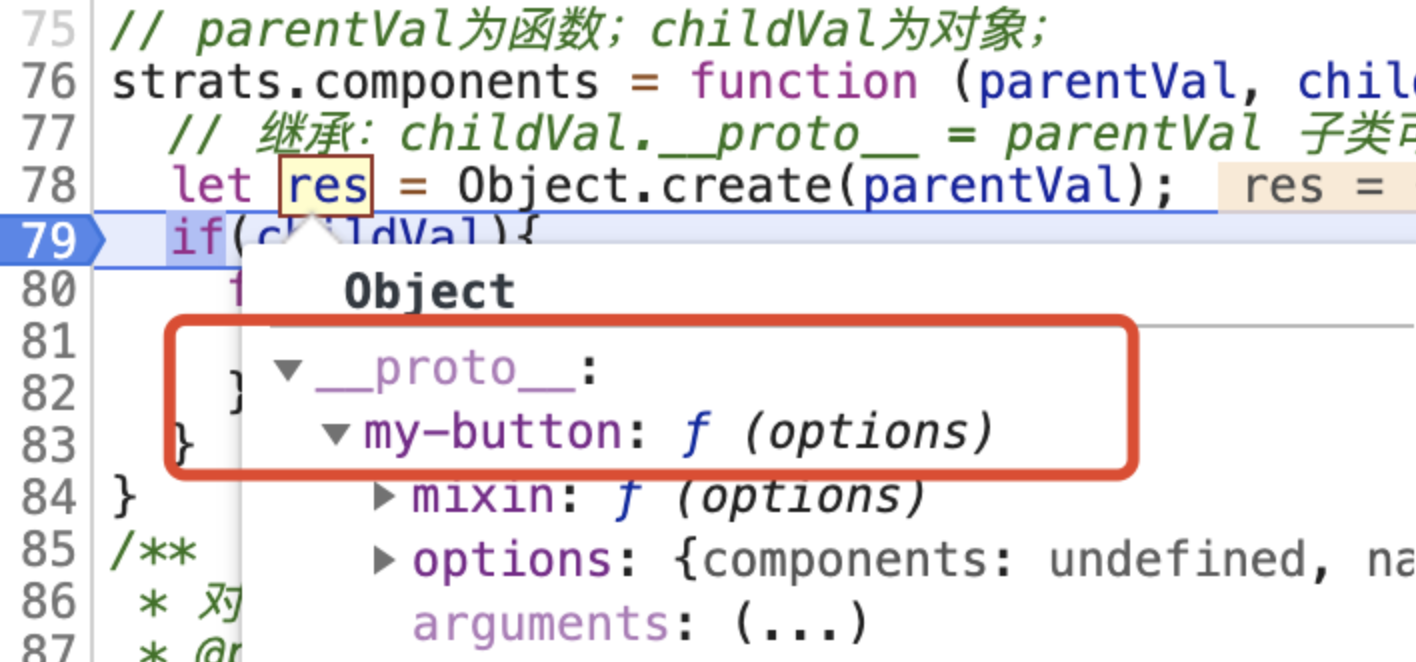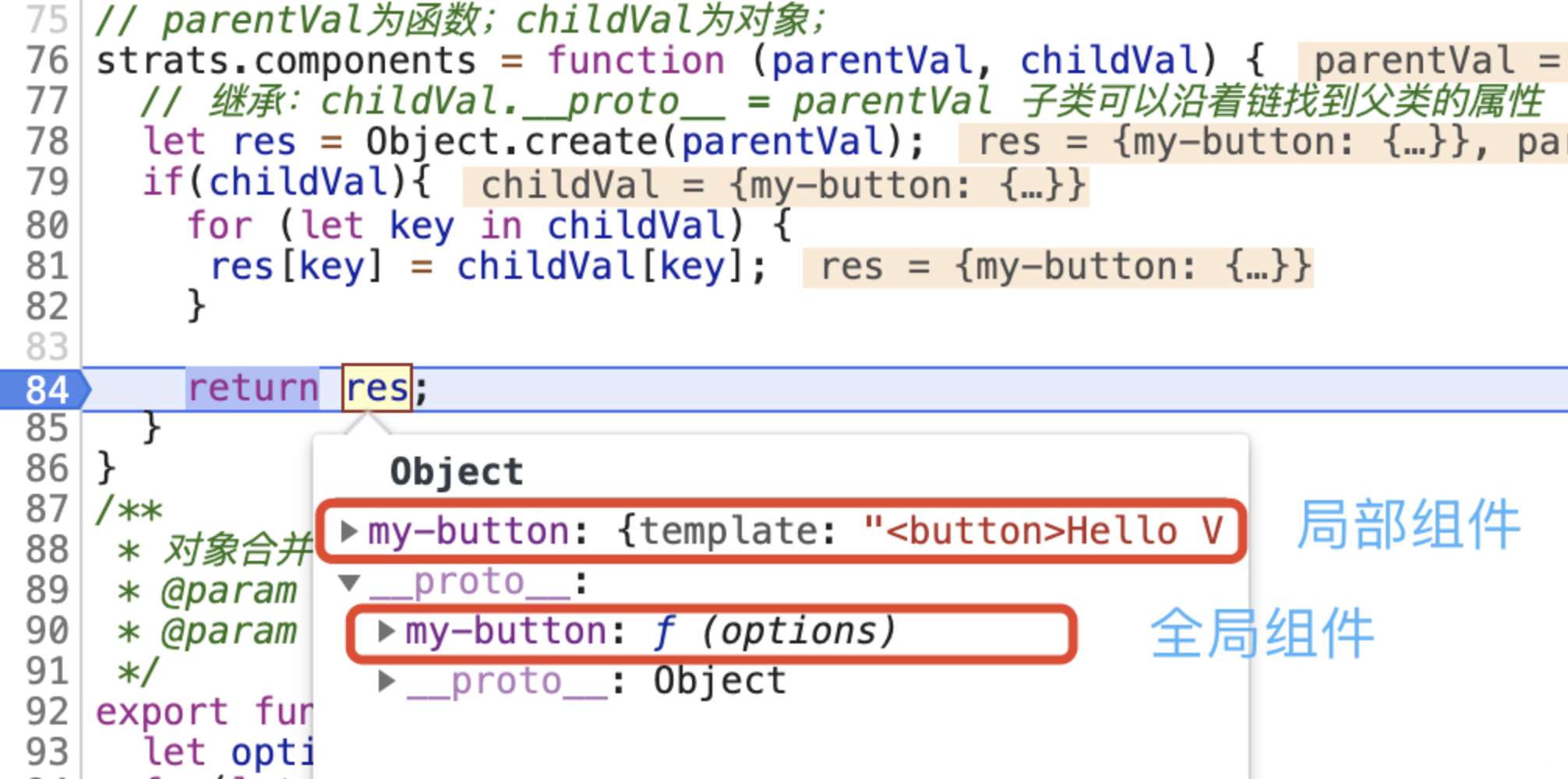一,前言
上篇,介绍了 Vue.extend 实现,主要涉及以下几个点:
本篇,组件部分 - 组件的合并策略;
二,组件合并策略
1,前文回顾
在前面的两篇中,分别介绍了组件部分的 Vue.component 和 Vue.extend 实现:
2,组件合并的位置
执行情况分析
<script> Vue.component('my-button',{ name:'my-button', template:'<button>全局组件</button>' }) </script>
复制代码
上边的Vue.component执行完成后,Vue.options.components中就已经存储了全局组件的构造函数;
<script> Vue.component('my-button',{ name:'my-button', template:'<button>全局组件</button>' }) new Vue({ el: "#app", components:{ 'my-button':{ template:'<button>局部组件</button>' } } }); </script>
复制代码
当 new Vue 执行时,会进行组件的初始化流程,调用 _init 方法:
// src/init.js#initMixin
Vue.prototype._init = function (options) { const vm = this; // this 指向当前 vue 实例 // vm.$options = options; // 将 Vue 实例化时用户传入的options暴露到vm实例上 // 此时需使用 options 与 mixin 合并后的全局 options 再进行一次合并 vm.$options = mergeOptions(vm.constructor.options, options); // 目前在 vue 实例化时,传入的 options 只有 el 和 data 两个参数 initState(vm); // 状态的初始化
if (vm.$options.el) { // 将数据挂在到页面上(此时,数据已经被劫持) vm.$mount(vm.$options.el) } }
复制代码
其中,mergeOptions方法对vm.constructor.options和options进行合并:
即在这个位置,就会进行全局组件和局部组件的合并;
函数 or 对象分析
原因分析:
<script> // 全局组件 Vue.component('my-button',{ // 内部被 Vue.extends 处理,成为一个构造函数 name:'my-button', template:'<button>Hello Vue 全局组件</button>' }) new Vue({ el: "#app", components:{ // 这里不会被 Vue.extends 处理,就真的是一个对象 'my-button':{// 局部组件 template:'<button>Hello Vue 局部组件</button>' } } }); </script>
复制代码
3,组件合并的策略
策略模式
在之前做 mixin 生命周期的合并时,在 mergeOptions 方法中使用了策略模式:
针对不同生命周期钩子,声明各自的合并策略;
如果在没有找到对应的策略,默认使用新值覆盖老值;
let strats = {}; // 存放所有策略let lifeCycle = ['beforeCreate','created','beforeMount','mounted'];// 创建各生命周期的合并策略lifeCycle.forEach(hook => { strats[hook] = function (parentVal, childVal) { // 在strats策略对象中,定义了各生命周期的合并策略 }})
/** * 对象合并:将childVal合并到parentVal中 * @param {*} parentVal 父值-老值 * @param {*} childVal 子值-新值 */export function mergeOptions(parentVal, childVal) { let options = {}; for(let key in parentVal){ mergeFiled(key); } for(let key in childVal){ // 当新值存在,老值不存在时:添加到老值中 if(!parentVal.hasOwnProperty(key)){ mergeFiled(key); } } // 合并当前 key function mergeFiled(key) { // 策略模式:获取当前 key 的合并策略 let strat = strats[key]; if(strat){ options[key] = strat(parentVal[key], childVal[key]); }else{ // 默认合并策略:新值覆盖老值 options[key] = childVal[key] || parentVal[key]; } }
return options;}
复制代码
这样,就可以通过策略模式,实现了在 strats 中配置 component 对应的合并策略;
在 mergeOptions 方法执行并处理 component 合并时,就会根据配置好的策略进行合并;
合并策略
将vm.constructor.options和options进行合并,先找局部组件再找全局组件;
// parentVal为函数;childVal为对象;strats.component = function (parentVal, childVal) { // 继承:子类可以沿着链找到父类的属性 childVal.__proto__ = parentVal let res = Object.create(parentVal); if(childVal){ for (let key in childVal) { res[key] = childVal[key]; } return res; }}
复制代码
4,组件合并后测试
测试组件合并
<script> // 全局组件 Vue.component('my-button',{ name:'my-button', template:'<button>Hello Vue 全局组件</button>' }) new Vue({ el: "#app", components:{// 局部组件 'my-button':{ template:'<button>Hello Vue 局部组件</button>' } } }); </script>
复制代码
在 mergeOptions 方法中,会找到预设的组件合并策略函数:
组件合并:
此时,参数 parentVal 是一个函数;参数 childVal 是一个对象;
生成的新对象 res 可以在链上拿到 parentVal 上的全局组件:
再将儿子全部合并到新生成的 res 对象上:
这样,在 res 上查找组件时,会先查找局部组件,如果没找到,则继续通过链找到全局组件;
优先查找局部组件,如果没有会沿着链向上继续找,找到局部组件;
三,结尾
本篇,介绍了组件部分-组件的合并,主要涉及以下几个点:
组件初始化情况;
组件合并的位置;
组件合并的策略;
组件合并后测试;
下一篇,组件部分-组件的编译;



















评论